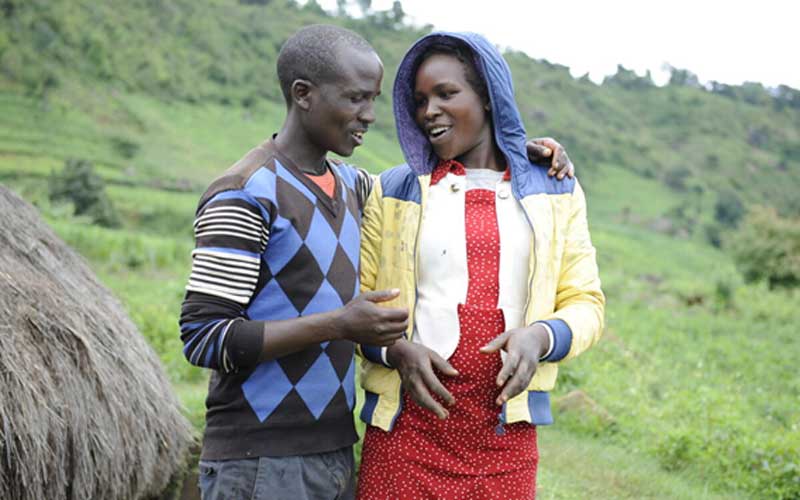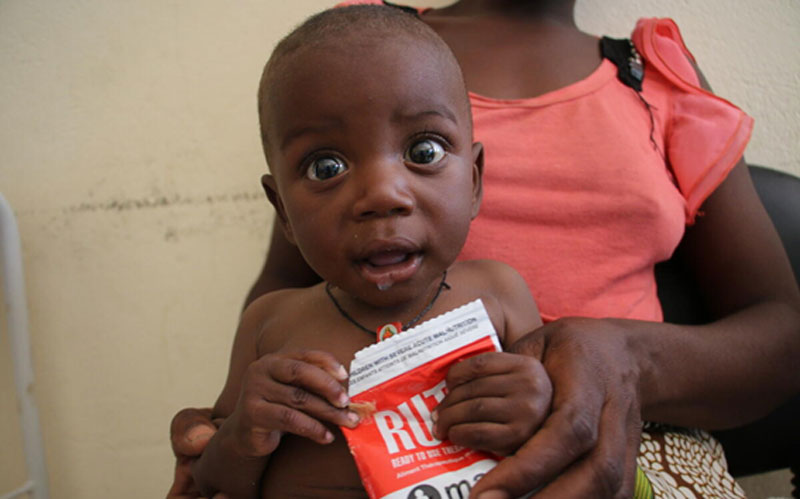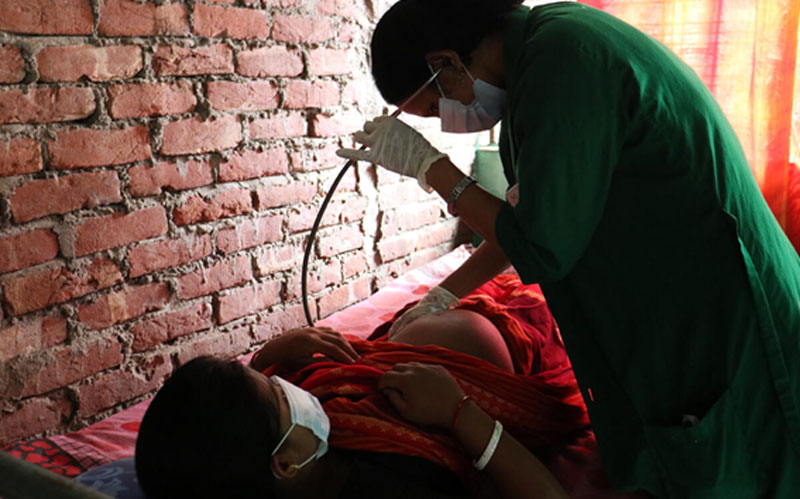The rate at which babies die is an important marker of the overall health of a society. High infant mortality rates are generally indicative of unmet human health needs in sanitation, health care, nutrition and education.
Infant mortality rates can also indicate a lack of social justice within a country.
to infant mortality globally. The correlation is especially pronounced in regions where mothers:
, infant mortality rates can vary significantly throughout – particularly in regions like sub-Saharan Africa. In rural areas, infant death rates are higher than in cities.
Every newborn baby comes into the world packed with potential. Even a child just minutes old possesses
Among other things, she or he has the right to life, to health, to protection … to opportunity.
If a society can’t protect and provide for its most vulnerable members – no matter where they live – changes need to be made. Otherwise, rights go unrecognized, potential goes unmet, human development is hindered and hearts are perpetually broken.
6. What is the infant mortality landscape in Canada?
According to UNICEF, Canada’s infant mortality rate is just
four deaths per 1,000 live births. Compare that with the highest rate in the world –
81 infant deaths per 1,000 live births in the Central African Republic – and Canada appears to be doing pretty well.
Then consider the inequities across our country. According to the Government of Canada’s website, infant mortality rates in the most ‘materially deprived’ areas are
1.6 times higher than in the least ‘materially deprived.’
Canada’s remote communities
In Canada, we have a vast geographic landscape to contend with when ensuring each resident has access to clean water and sanitation, health care and education.
 Nunavut’s 25 health centres are isolated and spread across long distances. A newborn baby in crisis might need to be airlifted as far as Ontario or Manitoba. Photo: Isaac Demeester
Nunavut’s 25 health centres are isolated and spread across long distances. A newborn baby in crisis might need to be airlifted as far as Ontario or Manitoba. Photo: Isaac Demeester
According to the Organisation for Economic Cooperation and Development (OECD) infant mortality rates are
higher in Indigenous communities, particularly in families living on reserves in rural areas.
Some 60 per cent of Indigenous Canadians are likely be located in rural regions. Many Indigenous communities face infrastructure deficits, like
lack of clean water and sanitation, particularly in remote areas.
Lack of birth and health facilities
According to one study,
Indigenous families in Canada face striking inequities in access to birth facilities and providers, compared to non-Indigenous families.
Travelling 200 km or more for birthing is common for Indigenous mothers, the researchers found. For Indigenous women, the journey may include rough roads, late at night. If no one is available to accompany the mother, she would go alone.
7. What is World Vision doing to help prevent infant mortality?
The World Health Organization notes that while some 8.7 million infants died in 1990 globally,
that number was reduced by half by 2018.
Organizations like World Vision are playing a critical part in preventing the deaths of millions of babies worldwide. Working with families and communities, we’re helping:
 In Kenya, husbands are attending Mencare groups through a partnership between World Vision and Canada’s government. Meshack (left) is learning how to better nourish and support his pregnant wife, Abigael, and their unborn baby. Photo: Dickson Kahindi
In Kenya, husbands are attending Mencare groups through a partnership between World Vision and Canada’s government. Meshack (left) is learning how to better nourish and support his pregnant wife, Abigael, and their unborn baby. Photo: Dickson Kahindi
Significantly reducing infant mortality is no small challenge – it takes a global community. Read on, to see how World Vision is partnering with others to help make it happen.
Emergency care and feeding programs
World Vision provides urgently needed care for children battling extreme malnutrition, helping restore them to health. Such programs are especially critical in regions battling multiple emergencies – drought and conflict, for instance.
One key approach we used is called Community-based Management of Acute Malnutrition Model (CMAM). This equips volunteers to identify and initiate treatment for children and
infants with acute malnutrition before they come seriously ill.
Supplementary feeding plays a critical part in recovery. One aspect is take-home rations for infants and young children, as well as pregnant and lactating mothers.
 In Angola, six-month-old Beto recovered from extreme malnutrition after the country’s worst drought in 38 years. World Vision partnered with Canadian charity Food for Famine to help Beto make a full recovery. Photo: Eunice Lopes
1000 Day Journey initiative
In Angola, six-month-old Beto recovered from extreme malnutrition after the country’s worst drought in 38 years. World Vision partnered with Canadian charity Food for Famine to help Beto make a full recovery. Photo: Eunice Lopes
1000 Day Journey initiative
World Vision is working to ensure mothers and their babies get proper nutrition in a child’s first 1000 days,
from conception to their second birthdays. This window plays a critical role in determining their future.
The
ENRICH 1000 Day journey is a six-year initiative to support women and children’s health, in impoverished communities in four African and Asian countries. It’s led by World Vision, with funding from the Government of Canada.
The ENRICH 1000 Day Journey is part of Canada’s contribution to ending preventable child deaths by 2030 – one of the United Nations’ Sustainable Development Goals.
Born on Time program
Preterm birth complications are among
the leading causes of infant mortality When babies are born too early, they are often insufficiently grown and developed to thrive outside the womb.
In Canada, a preterm infant would likely receive intensive care – perhaps spend weeks in an incubator. But that’s not an option in most parts of the world.
Through the
Born on Time program, World Vision has been working to prevent and treat preterm births. From 2016 to 2021, we worked with government, corporate and charity partners to tackle barriers to newborn and maternal health.
 In Bangladesh, Ethiopia and Mali, the Born on Time program has supported health care workers to provide pre-natal, parental and post-natal care and counselling. Post-natal and delivery support are also critical in reducing infant mortality rates. Photo: Suborno Chisim
Born on Time
In Bangladesh, Ethiopia and Mali, the Born on Time program has supported health care workers to provide pre-natal, parental and post-natal care and counselling. Post-natal and delivery support are also critical in reducing infant mortality rates. Photo: Suborno Chisim
Born on Time focused on Bangladesh, Ethiopia and Mali, three countries with high preterm birth rates. In addition to saving lives, it improved gender equality, nutrition and health care access for many families in many communities. Moreover,
Born on Time led to learnings which World Vision and others will implement moving forward, to continue reducing global infant mortality.
8. How can I help prevent infant mortality?
The good news is this: most infant deaths are preventable. World Vision offers Canadians a number of ways to help. Some involve tackling
causes of infant mortality. Others involve reducing
contributing factors.
Here are some options:
Raw Hope: Support families in dire need, in some of the world’s toughest places e.g., Afghanistan, Honduras and South Sudan.
Nutrition alone can save the lives of some of the world’s most vulnerable citizens – pregnant mothers and young babies among them.